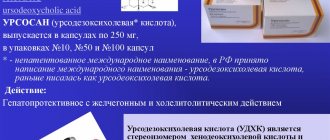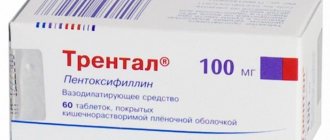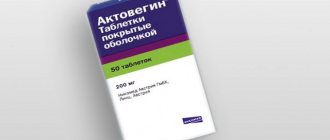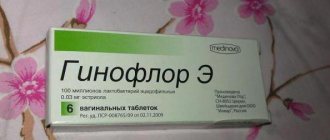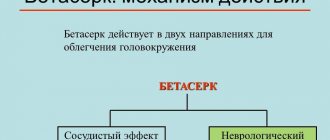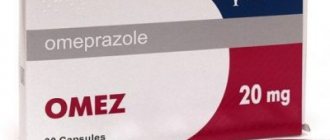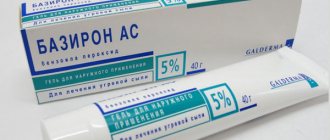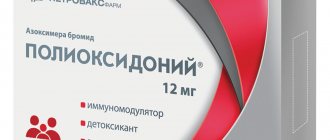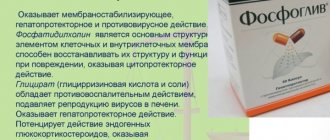Furamag is an expensive prescription drug prescribed for infectious and inflammatory diseases of the urogenital tract: cystitis, pyelonephritis, gynecological diseases. One package costing from 400 to 800 rubles per course is not enough, so the issue of selecting Furamag analogs is relevant in case of financial difficulties. Other reasons for replacement are insensitivity to pathogenic microflora, ineffectiveness, and unwanted reactions. It is recommended to coordinate all decisions with your doctor.
pharmachologic effect
Furamag is an antibacterial drug from the group of nitrofuran derivatives, available in capsules of two dosages - 25 mg and 50 mg. Suitable for children and adults, sold with a doctor's prescription.
The medication contains furazidin, which has the following therapeutic effects:
- bactericidal – causes the death of pathogenic microflora sensitive to antibiotics;
- bacteriostatic – inhibits the growth and reproduction of pathogens.
Before prescribing the medicine, it is necessary to conduct an analysis or culture to determine the sensitivity of bacteria to antibiotics.
Furamag - instructions for use
The antibiotic Furamag is prescribed by a specialist to adults and children in a dosage of 25–100 mg, depending on the weight, indications, and the presence of restrictions on use. Frequency of administration: 3 times a day. The course is determined individually, on average 7–10 days.
Repeated use of the medication is allowed after a 10-15 day break.
Important! If you miss a dose, you should not take a double dose.
Drink before or after meals
To prevent unwanted reactions from the gastrointestinal tract and preserve the active substance from destruction, Furamag must be taken after meals . Drink exclusively with plenty of water.
Cheap substitutes for Furamag
Among the inexpensive substitutes for Furamag, its structural analogues (with the same active ingredient) are distinguished - these are Furagin, Furasol, Furazidin and Urofuragin, as well as its analogues with a similar therapeutic effect, which have different active substances, but all these drugs are combined into the uroseptic group – these are Furadonin, Furazolidone and others.
Furadonin
Refers to antibacterial agents derived from nitrofurans. The active substance is nitrofurantoin. Being an oxygen acceptor, nitrofurantoin disrupts the process of cellular respiration of pathogenic microorganisms, which leads to a violation of the integrity of their cell wall. The substance also disrupts the synthesis of nucleic acids, proteins, DNA and RNA of bacteria.
The drug stops the growth and reproduction of pathogens, and in increased dosages has a detrimental effect.
Almost the entire drug is concentrated in the urinary system, so it is used mainly for inflammatory diseases of this department:
- In the acute period, adults and children over 12 years of age are prescribed 100 mg twice a day for a week.
- For chronic relapsing course - 100 mg 4 times a day, course - a week.
- For postoperative prophylaxis - 100 mg twice a day (during the period of surgery and after it for another 3 days).
The maximum allowable dose per day is 600 mg. Tablets are taken after meals and washed down with a sufficient amount of liquid.
Indications include acute and chronic recurrent urinary tract infections caused by bacteria. The medication is also used to prevent these infections during surgical and diagnostic interventions (cystoscopy, catheterization).
Side effects of Furadonin
Contraindications for use are:
- hypersensitivity reactions to the drug;
- pulmonary sclerosis;
- absence or small amount of urine per day;
- porphyria in the acute phase;
- acute kidney dysfunction or chronic kidney disease with impaired creatinine clearance;
- hemodialysis;
- heart failure;
- liver cirrhosis, hepatitis;
- pathology of peripheral neurons;
- perinephric abscess.
Furadonin differs from Furamag in its active ingredient, price (Furadonin is cheaper), method of application and dosage. Furadonin has lower bioavailability.
Furazidin
Antimicrobial agent. The active ingredient is furazidin. By inhibiting proteins, Krebs cycle enzymes and nucleic acid synthesis, it leads to the destruction of the bacterial membrane. It is also distinguished by its ability to activate the immune system, increasing the activity of phagocytes and the level of complement.
Use 100-200 mg on average 2-3 times a day after eating, for 7-10 days. After 2 weeks, if necessary, a repeat course can be performed. In addition to tablets, a solution for topical use is available; the frequency of its application is calculated individually.
Furazidine is indicated for the following diseases:
- Urogenital infections caused by sensitive bacterial flora.
Urogenital infections - For prophylaxis during invasive interventions in the bladder, urethra, during operations on the organs of urination and urination.
- Skin infections, burns, for washing cavities (local solutions are used).
The medicine is contraindicated in cases of dysfunctional kidney pathologies in the stage of decompensation, hypersensitivity to nitrofuran derivatives, age under 1 year, pregnancy and breastfeeding.
Furazidin differs from the original product in its release form (available in a solution for topical use), a wider range of indications and earlier use in children (Furamag is used in children starting from three years old, Furazidin - from 1 year). The cost of Furazidine is less.
Canephron
The medicine is represented by a collection of herbs (centaury, common lovage root, rosemary leaves, rose hips). Canephron acts as an antispasmodic, diuretic, antimicrobial and anti-inflammatory drug.
Action of Canephron
Available in two forms:
- In the form of a solution for oral use. Prescribed for adults: 50 drops, in pediatrics: for children under one year old - 10 drops, for preschoolers - 15, from the age of six - 25 drops three times a day. The required number of drops is diluted in a small volume of water and drunk.
- In the form of tablets, Canephron is prescribed for adults, 2 tablets, for children from the age of six - one tablet three times a day.
After the symptoms subside, the solution or tablets are used for another 2-4 weeks.
The medicine is recommended for patients suffering from chronic cystitis, pyelonephritis, glomerulonephritis, tubulointerstitial nephritis, as a prevention of stone formation in the kidney structures.
The medicine has the following contraindications:
- Pathological sensitivity to components.
- Erosive and ulcerative lesions of the gastrointestinal tract.
- Alcoholism.
- Diseases associated with impaired absorption and conversion of lactose, fructose, sucrase.
- Age (less than 1 year for solution, less than 6 years for tablet form).
In comparison with Furamag, Canephron has the following differences: herbal composition, different release forms and dosages. Indications also include non-inflammatory lesions of various parts of the kidneys. The method, duration of use and contraindications differ (Canephron is intended for longer use). Canephron, unlike Furamag, is used in pediatrics from 1 year of age. The cost of the drugs is almost equal.
Furamag's analogs
The antibiotic Furamag is available in capsules, so it is not suitable for people with difficulty swallowing. For some patients, the drug is not available due to its high price. In these and other cases, it is possible to agree with your doctor on the choice of Furamag substitutes.
Cheap analogs of Furamag may have the same or different composition, indications, and contraindications. Before purchasing, you should read the instructions for use.
List of Furamag substitutes with prices in Moscow and country of origin
| Analogue | Price, in rubles | Manufacturer country |
| Furamag | 400-800 | Latvia |
| Nolitsin | 150-450 | Slovenia |
| Urofuragin | 300-450 | Poland |
| Furagin | 100-500 | Russia |
| Furadonin | 80-150 | Russia |
| Nitroxoline | 60-100 | |
| 5-NOK | 200-300 | Slovenia |
| Monural | 350-900 | Switzerland |
| McMirror | 900-1250 | Italy |
| Palin | 250-350 | Slovenia |
| Cyston | 400-550 | India |
| Canephron | 450-650 | Germany |
Nolitsin
Substitute for Furamag - Nolitsin. Produced by a foreign pharmaceutical company in the form of tablets. The active substance is norfloxacin from the group of fluoroquinolones. Not for use in children under 15 years of age. Directions for use: 1 tablet twice a day for 5–10 days.
Which is better for cystitis - Furamag or Nolicin - is determined individually and depends on the sensitivity of pathogenic bacteria to antibiotics. Both medicines are imported, high quality and effective. Often prescribed for the treatment of diseases of the urinary system, undesirable effects rarely occur if the instructions are followed.
Urofuragin
An analogue of Furamag in tablets is the antibiotic Urofuragin, produced by a Polish pharmaceutical company in one dosage of 50 mg. Contains furazidin, used for 7–10 days to treat diseases of the urinary system in large dosages (100–200 mg).
Which is better - Furamag or Urofuragin, in each case individually. Both drugs contain the same substance, providing uniform indications for use. However, due to the release form and dosage, the Urofuragin analogue is not used in pediatric practice. It is suitable for people with difficulty swallowing capsules. To ensure the desired effect, the dosage of the analogue is 2 times greater than Furamaga.
McMirror
Antibacterial and antiprotozoal drug - Macmiror, available in tablets for adults and children. Contains nifurotel, a nitrofuran derivative. Used for bacterial infections of the urinary system.
When choosing between Macmiror or Furamag, you must be guided by these antibiotic sensitivity tests. This determines which drug will be better.
Palin
Analogue Palin is a source of pipemidic acid, which has an antibacterial effect. Available in capsules. Used twice a day in children over 14 years of age and adults with urinary tract diseases.
Cyston
The Indian over-the-counter drug Cyston is based on herbal extracts that have anti-inflammatory, diuretic, and antimicrobial effects. Dissolves urinary stones in urolithiasis. Used for pyelonephritis, cystitis, gout, 2 tablets twice a day until the condition improves and the source of infection is eliminated.
For pyelonephritis, complex treatment is better: the use of the antibiotic Furamag and Cyston. However, patients, when they see the simultaneous prescription of two drugs, think about what is better - Cyston or Furamag. Both medications are aimed at eliminating infection and have an antimicrobial and antibacterial effect. However, in case of cystitis and pyelonephritis, diuretic and anti-inflammatory drugs are required to remove pathogenic bacteria from the body. Cyston has this effect.
Prices for the drug and its main analogues, average in Russia
Furamag and its cheaper analogues are first-line drugs in the treatment and prevention of uncomplicated urinary tract infections in adults and children over 3 years of age. The price category for the original, generics or analogs for therapeutic action is different, often it depends on the manufacturer, dosage, release form and a number of other factors.
| Name of the drug | Release form and dosage, mg | Number of tablets/ampoules/capsules per package, pcs. | Average price, rub. |
| Furamag | Capsules, 25 | 30 | 500 |
| Capsules, 50 | 30 | 700 | |
| Urofuragin | Tablets 50 | 30 | 330 |
| Furagin | Tablets 50 | 30 | 200 |
| Furadonin | Tablets 50 | 20 | 100 |
| Tablets 100 | 20 | 150 | |
| Furazolidone | Tablets 50 | 20 | 100 |
| Canephron | Dragee | 60 | 460 |
| Drops for oral administration | 100 ml | 470 | |
| Furasol | Sachets, 1 g | 15 | 480 |
Furagin or Furamag - which is better?
Furagin is an analogue of Furamag 50 mg, produced by domestic manufacturers in the form of tablets, less often capsules. Used in pediatrics from 3–4 years. Contains furazidin, take 1-2 tablets three times a day for 7-10 days.
It is difficult to determine which is more effective - Furamag or Furagin. Both drugs contain the same active substance, have the same indications, prescription restrictions, and side effects. They differ in manufacturer (Latvia and Russia), the frequency of adverse reactions, the degree of purification of raw materials and bioavailability, and price. The analogue has a lower cost, the course of treatment is budgetary and affordable.
Russian-made analogues
Some of the most common nitrofuran derivatives are drugs with the following trade names: Furagin, Furacillin, Co-trimoxazole and others.
Furagin
A drug with a pronounced antimicrobial and antiprotozoal effect. The main component is furazidin. Pharmacodynamically does not differ from the original drug.
The drug has the following indications for use:
- Acute and chronic bacterial infections of the urinary and urinary organs (inflammatory diseases of the kidneys, bladder, urethra).
- Prostatitis.
- For the purpose of prevention and treatment after surgical interventions on the genitourinary system.
Side effects of Furagin
Adults should take Furagin for 7-10 days, daily, at a dosage of 200-600 mg/day. in 2-3 doses. 600 mg is the highest daily dose. The drug is not used in pediatric practice.
Contraindications are similar to those of the original - Furamag. The differences between Furagin and Furamag lie in the price category (Furagin is a cheaper Russian analogue).
Furacilin
Belongs to the group of local antiseptics and disinfectants. The active ingredient is nitrofural. It is a powerful antiseptic and exhibits antibacterial activity against staphylococci, streptococci, pathogenic rod flora, salmonella, and anaerobic clostridial infection. The mechanism of action is to disrupt DNA function and inhibit cellular respiration of bacteria.
Furacilin is used topically. To prepare the solution, you need to dissolve 1 tablet in 100 ml of 0.9% saline solution. The frequency of rinsing the mouth and throat depends on the recommendations of the attending physician.
Pharmacological features of the drug
Methods of using the solution:
- For purulent lesions of the pleura, after suctioning the contents, 200-100 ml of the prepared solution is injected into the pleural cavity.
- For skin lesions (burns, bedsores, purulent wounds, etc.), irrigate its surface with Furacilin solution and apply wet bandages.
- For purulent otitis, Furacillin solution should be instilled into the external auditory canal.
- After surgery for osteomyelitis, the cavity is washed and a wet bandage is applied.
Furacilin is prescribed in the following cases:
- Inflammatory diseases of the oral cavity and pharynx of bacterial etiology.
- Skin lesions (2nd and 3rd degree burns, bedsores, purulent wounds, ulcers).
- Purulent-necrotic lesions of bone and bone marrow.
- Pyothorax.
- Chronic recurrent purulent otitis.
- Anaerobic infection.
The medication should not be used for allergic dermatitis and hypersensitivity reactions.
Adverse reactions include local allergic manifestations, irritation of the mucous membranes (when rinsing the mouth), itching, and hyperemia. In rare cases - Quincke's edema.
The differences between Furacillin and the original drug are as follows:
- Active substance.
- Dosage form (Furacilin is intended only for topical use in the form of a solution).
- Indications.
- Furacilin is several times cheaper than Furamag.
Co-trimoxazole
Sulfanilamide, which has pronounced antibacterial activity. A combination drug containing sulfamethoxazole and trimethoprim. The antibacterial effect is manifested by blocking the synthesis of folates in bacteria.
Salmonella, Shigella, Neisseria, Proteus, Vibrio cholerae, Yersinia, Escherichia, Staphylococcus, Corynebacteria, Chlamydia, Actinomycetes, Klebsiella, Pneumocytes are sensitive to the drug.
Co-trimoxazole is taken orally, after meals, with water. The dosage depends on age: up to 2 years – 120 mg, from 2 to 5 years – 120-240 mg, from 6 to 12 years – 240-480 mg twice a day. Adults and children over twelve years of age - 960 mg 2 times a day. Used in a course of 5 days to two weeks.
Indications include infections caused by sensitive bacterial flora of the following organs and organ systems:
- Respiratory system (pneumonia, bronchitis, lung abscess, pleural empyema).
- ENT organs (otitis, sinusitis).
- Inflammation of the meninges, brain abscess.
- Urogenital system (pyelonephritis, urethritis, salpingoophoritis, prostatitis).
- Gastroenteritis, enterocolitis.
- Pyoderma, furunculosis.
Contraindications include hypersensitivity, neonatal period, pregnancy, dysfunctional conditions in the stage of decompensation of the kidneys, heart, liver, hematological diseases, glucose-6-dehydrogenase deficiency.
It differs from Furamag in its active substance, mechanism of action, and method of application. Co-trimoxazole has a wider list of indications and is inexpensive.
Furadonin or Furamag - which is better for cystitis
Furadonin is a cheap Russian analogue of Furamag. It belongs to nitrofuran derivatives and contains nitrofurantoin. Prescribed in early childhood and adults.
According to the instructions for use, the Furadonin analogue is used in childhood, from the 1st month. Furamag should not be used until 3 years of age. What is better for children – Furamag or Furadonin – depends on the patient’s age and indications. The analogue has a more gentle effect and is less effective.
Furamag capsules 25 mg No. 10x3
Name
Furamag caps 50 mg in container pack No. 10x3
Main active ingredient
Furazidin
Release form
Capsules
Compound
Active ingredient: soluble furagin (Furaginum solubile). Each Furamag 50 mg capsule contains 50 mg of soluble furagin. Excipients: basic magnesium carbonate, potassium carbonate, talc. Capsule composition: titanium dioxide (E 171), quinoline yellow dye (E 104) and gelatin.
Description
Hard gelatin capsules No. 3 (yellow/yellow) containing a coarse orange-brown to reddish-brown powder. The presence of particles of different sizes in white, yellow, orange and orange-brown is allowed.
Dosage
50mg
Pharmacological properties
Pharmacodynamics
The active ingredient of the drug Furamag - soluble furagin belongs to the group of nitrofurans and has a wide spectrum of antimicrobial activity. Resistance to Furamag develops slowly and does not reach a high degree. Furamag is active against both gram-positive and gram-negative microorganisms. In relation to staphylococci (Staphylococcus aureus, S. saprophyticus, S. epidermidis), Escherichia coli, Aerobacter aerogenes, Bact. Citrovorum, Proteus mirabilis, Proteus morganii Furamag, compared to other nitrofurans, is more active. Also effective against many other pathogenic or opportunistic bacteria, including Streptococcus agalactiae, Enterococcus spp - Enterococcus faecalis, Enterococcus faecium and Corynebacterium, some gram-negative bacteria (Citrobacter amalonaticus, C. diversus, C. freundii, Klebsiella oxytoca, K. ozaenae, Enterobacter, Neisseria, Salmonella, Shigella). Resistant to Pseudomonas aeruginosa, most strains of Proteus spp, Serratia spp. The minimum inhibitory concentration (MIC) of soluble furagin for most sensitive microorganisms in vitro is 0.2 to 6 μg/ml. Mechanism of action. Nitrofurans disrupt the processes of cellular respiration of microorganisms, suppress the tricarboxylic acid cycle (Krebs cycle), and also inhibit the biosynthesis of nucleic acids of microorganisms, resulting in the destruction of their membrane or cytoplasmic membrane. As a result of the action of nitrofurans, microorganisms produce fewer toxins, and therefore an improvement in the patient’s general condition is possible even before a pronounced suppression of the growth of microflora.
Pharmacokinetics
Furamag is a mixture of soluble furagin and basic magnesium carbonate in a 1:1 ratio. The pharmacokinetic properties of soluble furagin differ from the properties of simple furagin. The relative bioavailability of Furamag is on average 2.5 times higher than that of Furagin when taken orally in the same doses. Absorption - in the small intestine, by passive diffusion. The absorption of nitrofurans from the distal segment of the small intestine exceeds the absorption from the proximal and medial segments by 2 and 4 times, respectively (should be taken into account during the simultaneous treatment of urogenital infections and diseases of the gastrointestinal tract, including chronic enteritis). Eating promotes the absorption of the drug. After a single dose of Furamag at a dose of 50 mg, the maximum concentration in the blood plasma is achieved after 3 hours and persists for 6-8 hours; Soluble furagin is detected in urine after 2-4 hours. The high content of the drug in the lymph is clinically important (it delays the spread of infection by the lymphatic route). The concentration of the active substance in bile and urine is several times higher, and in the cerebrospinal fluid – several times lower than in serum. The concentration of the active substance in urine is many times higher than the bacteriostatic concentration for sensitive microorganisms. Excretion through the kidneys occurs during tubular secretion and glomerular filtration (85%), partially undergoing reverse reabsorption in the tubules. Unlike other nitrofurans, the urine pH does not change after taking Furamag. In acidic urine (pH ≤5.5), the activity of nitrofurans increases and the risk of toxicity increases. In alkaline urine, the excretion of soluble furagin increases and the effectiveness of the drug decreases. It is slightly biotransformed (less than 10%), with a decrease in the excretory function of the kidneys, the intensity of metabolism increases. The daily dose is eliminated from the body within 24 hours.
Indications for use
Uncomplicated urinary tract infections (cystitis, urethritis, pyelitis) caused by microorganisms sensitive to soluble furagin. Prevention of infectious complications during urological operations and manipulations (cystoscopy, catheterization). Prevention of recurrent urinary tract infections.
Contraindications
Hypersensitivity to the active substance, other compounds of the nitrofuran group or excipients of the drug. Severe renal failure (creatinine clearance less than 30 ml/min), polyneuropathy (including diabetic), porphyria. Pregnancy and breastfeeding. Children up to 3 years of age (for this dosage form).
Use during pregnancy and lactation
Use during pregnancy is contraindicated. There are no adequate well-controlled clinical studies on the use of the drug during pregnancy. Nitrofurans cross the placental barrier, the concentration in the fetal blood is many times less than the concentration in the maternal blood. Nitrofurans are excreted into breast milk. During breastfeeding, the use of nitrofurans is contraindicated, as the risk of hemolytic anemia in the newborn increases.
Impact on the ability to drive vehicles or maintain machinery
The drug does not affect the ability to drive vehicles or operate machinery. But patients who experience dizziness, drowsiness or other side effects from the central nervous system during treatment should be careful when driving vehicles or other mechanisms.
Directions for use and doses
The drug is taken orally after meals; the capsules should be swallowed whole with plenty of water. Adults: 50-100 mg (1-2 capsules) 3 times a day. Children. Children weighing more than 30 kg: 50 mg (1 capsule) 3 times a day. The course of treatment is 7-10 days. If necessary, the course can be repeated after 10-15 days. To prevent infection Adults and children weighing 30 kg or more: 50 mg once daily. If a medication is missed, it must be taken as soon as possible. If it is near time for your next dose, take only that dose as scheduled. You should not take a double dose of the drug to replace a missed dose. Patients with impaired liver function: Patients with impaired liver function should use the drug with caution, and liver function tests should be monitored during treatment. Patients with impaired renal function: Patients with impaired renal function should use the drug with caution and monitor renal function. Elderly patients Caution should be exercised when using the drug in elderly patients. Children In children under 6 years of age, the use of drugs in capsule form is accompanied by a risk of aspiration, since full control of the swallowing reflex develops by the age of six. It is recommended to use the drug with caution in children under 6 years of age. If you have difficulty swallowing the capsule, it is recommended that you swallow the contents of the capsule after opening.
Side effect
Furamag, like other medicines, can cause side effects that do not occur in all patients. Classification of undesirable side reactions by frequency of development: very often (≥1/10); often (≥1/100 to
Overdose
There have been no reports of overdose cases. Typically, toxic effects may occur in patients with impaired renal function. In these cases, the symptoms listed in the Side Effects section are observed. Treatment. In case of poisoning, drink large amounts of liquid. Antihistamines are used to relieve acute symptoms. It is recommended to use B vitamins (thiamine bromide).
Interaction with other drugs
Should not be used simultaneously with sulfonamides, chloramphenicol, ristomycin, because inhibition of hematopoietic processes is possible. When used simultaneously with penicillin and cephalosporin, the antibacterial effect is significantly increased. Combines well with tetracycline and erythromycin. Urine alkalinizers weaken the activity of nitrofurans. Agents that acidify urine (acids, including ascorbic acid, as well as calcium chloride) enhance the activity of the drug, but the risk of developing toxic effects increases. In vitro, there is antagonism between nitrofurans and quinolones (nalidixic acid, norfloxacin, oxolinic acid). The clinical significance of this interaction is unknown, so their combined use should be avoided. The simultaneous use of Furamag and uricosuric drugs (probenecid, sulfinpyrazone) reduces the excretion of furagin soluble in urine and, therefore, may increase toxicity. During treatment, you should not drink alcoholic beverages, as unwanted side effects may increase (headache, nausea, vomiting, increased heart rate, decreased blood pressure, convulsions, feelings of heat and fear).
Precautionary measures
Caution must be exercised in patients with glucose-6-phosphate dehydrogenase deficiency, because there is a risk of developing hemolysis. Use with caution in patients with impaired renal, liver and nervous system function. Furamag is not recommended for use in cases of kidney parenchyma infections. Caution should be exercised in patients with anemia, B vitamin deficiency, pulmonary disease and patients with a history of hypersensitivity. Prescribe with caution to patients with diabetes mellitus due to the risk of developing polyneuropathy. At the first symptoms of neuropathy, the drug should be stopped. Long-term use of Furamag may also cause peripheral neuropathy. With long-term use, it is necessary to monitor liver and kidney function, as well as pulmonary function, especially in patients over 65 years of age (risk of pulmonary fibrosis). There are no data on cases of the development of pseudomembranous colitis during treatment with Furamag, although cases of pseudomembranous colitis have been reported with almost all antibacterial agents, including nitrofuran derivatives. The likelihood of this side effect should be taken into account in patients with diarrhea caused by suppression of the natural microflora of the rectum during the use of antibacterial agents. Unlike antibiotics, Furamag practically does not change the intestinal microflora. In the case of a mild form of pseudomembranous colitis, it is enough to stop taking the antibacterial agent. In patients taking Furamag, when determining glucose in urine using the copper reduction method, false-positive results may occur. If enzymatic methods are used to determine glucose in urine, Furamag does not affect the results of the analysis.
Storage conditions
In a place protected from moisture and light at a temperature not exceeding 25°C. Keep out of the reach of children.
Buy Furamag caps 25 mg in container pack No. 10x3 in the pharmacy
Price for Furamag caps 25 mg in container pack No. 10x3
Instructions for use for Furamag caps 25 mg in container pack No. 10x3
Monural or Furamag - which is better for cystitis
Monural is an antibiotic in powders based on fosfomycin. It is better than Furamag for acute cystitis, since it is used once. To do this, the contents of a sachet of 3 g for an adult or 2 g for a child 5 years of age and older are dissolved in a third of a glass of water, drunk before bed after a meal or 2 hours before a meal. If necessary, it can be reused after 24 hours.
Monural is an analogue of Furamag for children over 5 years old, approved for use by pregnant women.
Furamag or Canephron
Canephron is an imported analogue based on herbal extracts, approved for use in children over 6 years of age. It is used for edema and diseases of the urinary system in pregnant women in solution and tablets. It has several properties - diuretic, anti-inflammatory, antimicrobial, antispasmodic.
Furamag is an antibiotic prescribed by a doctor. Canephron is sold freely, without a prescription, and can be included in complex treatment. It eliminates spastic pain in pyelonephritis and cystitis, has a diuretic effect to reduce swelling and remove the pathogen.
